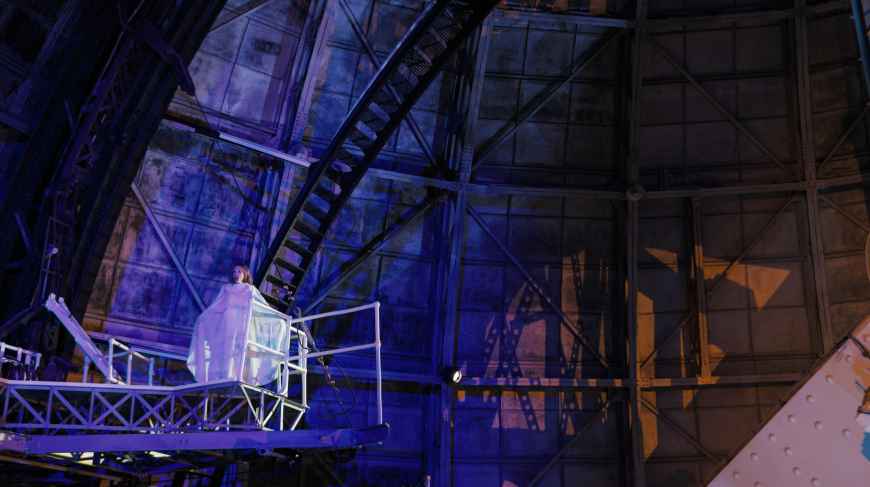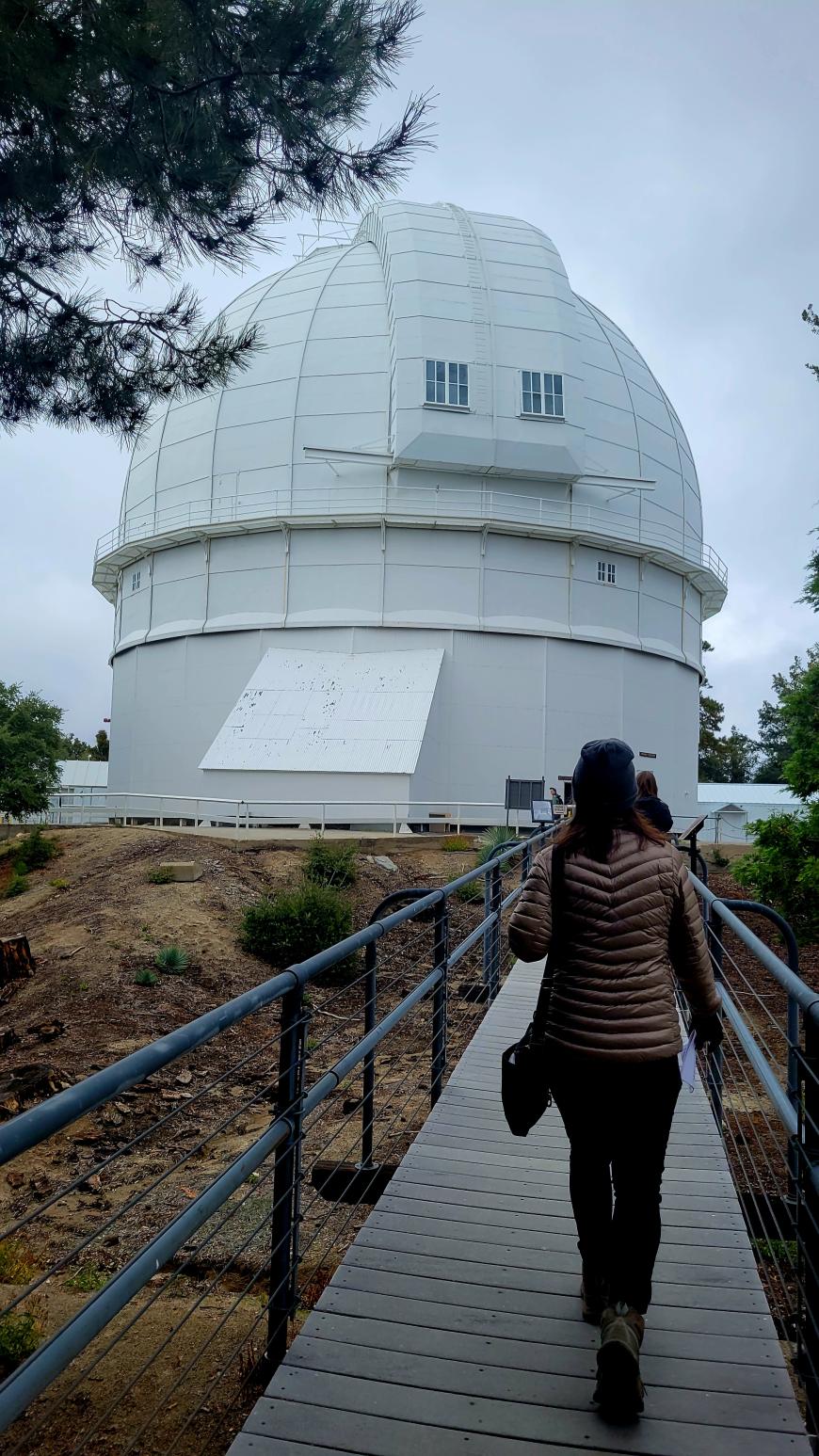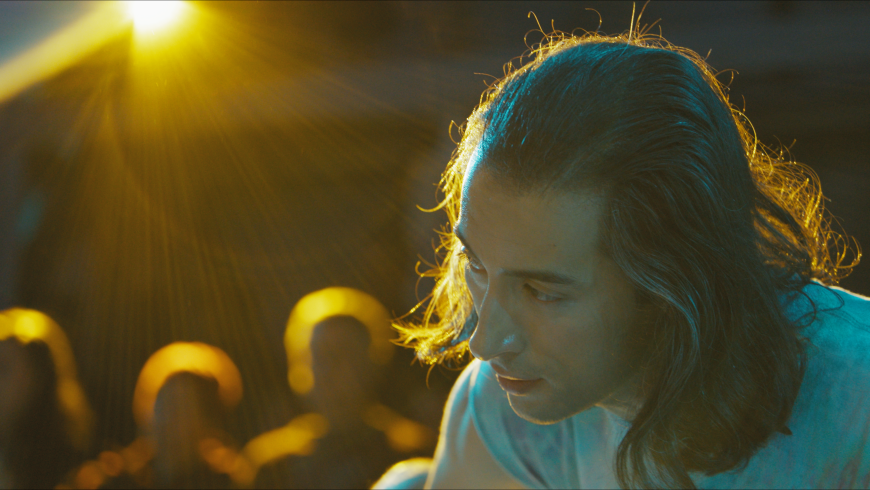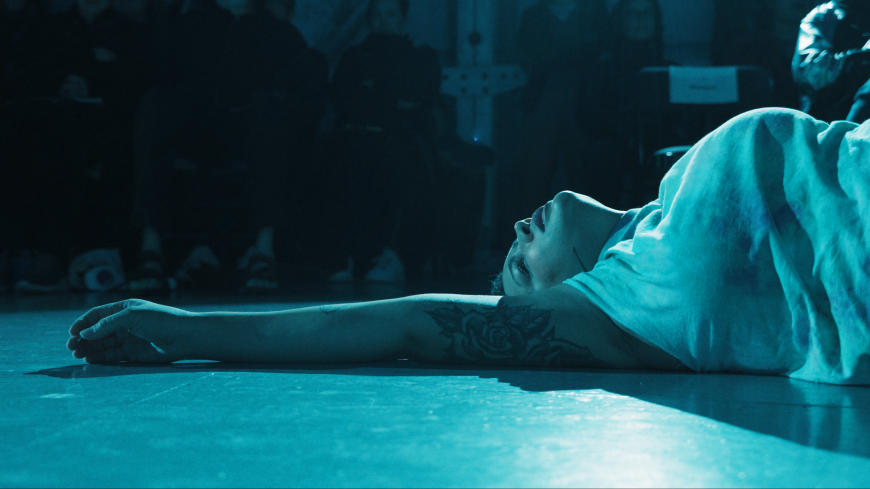
On Nov. 12, 2017, the long-dormant air-raid sirens of downtown Los Angeles bellowed to life, announcing the arrival of invaders from Mars. In fact, this War of the Worlds was an operatic creation conceived by The Industry, adapted and directed by Yuval Sharon and with music by Annie Gosfield.
Now, The Industry has flipped the War of the Worlds script on its head with the world premiere of Star Choir, composed by Malik Gaines to a libretto by Alexandro Segade. In this science-fiction vision of an uncertain future, humans are the invading species, having voyaged across the cosmos on a mission of survival and colonization. There is no turning back as the ecological disaster that was once our bountiful planet Earth fades forever in their wake.

To provide a setting worthy of Star Choir’s vision, The Industry required the audiences for four performances Sept. 30 – Oct. 1 to make an odyssey of their own — a long, winding road to the chilly summit of Mount Wilson in the San Gabriel Mountains (at 5,710 feet) and then a quarter-mile walk to the massive white-domed structure that houses the 100-inch telescope of Mount Wilson Observatory. Over the course of the next two hours, this towering structure would become our mothership and the set for one of the most remarkable operatic stagings imaginable.
After many years of developing Star Choir, Gaines and Segade readily admit that the piece borrows freely from a vast nebula of science-fiction films, television shows, and novels, as well as the latest scientific literature regarding the challenges of extended space travel and potential colonization. At the same time, the opera poses the bigger question of whether our species is capable of transcending the destructive tendencies that have brought us to the ecological brink.
As the lights on the great telescope and on the girders of the dome dimmed, Music Director Marc Lowenstein and the six members of the instrumental ensemble opened the show: bassist Marlon Martinez, cellist Ethan Philbrick, harpist Elizabeth Huston, hornist Malik Taylor, keyboardist Lucy Yates, and percussionist Guillermo Brown.
Arrayed like a mini-solar system, the ensemble was placed a level below where the audience sat and the action transpired. The singers/colonists moved freely on the ringed walkway that surrounds the telescope. They first appeared as a celestial choir, their intricately rising and falling harmonies describing the infinite cycle of living and dying stars: “Every one of us a sun, born in flames so luminous.”
The choir then became the members of a spaceship crew. As they awakened from their deep space hibernation, the accompanying music taking on a more backbeat-driven “let’s get things done” rhythm, they assumed their assigned roles. These included the Farmchitect (played by soprano Kelci Hahn), the Astrozoologist (soprano Mikaela Elson), the Trendcaster (tenor Gregório Taniguchi), the Archivartist (tenor Jon Lee Keenan), the Exomedic (bass Ben Lin), the Ergotech (bass-baritone Shyheim Selvan Hinnant), the SpecRepairs (alto Carmen Edano), and the mission’s Genengineer (alto Sarah Beaty).
As the colonists have their first encounter with the alien planet, which they choose to name Aurora, Gaines’s score wavers in its emotional temperament and instrumental accenting: glistening single notes and arpeggios in the harp, glassine electronic keyboard effects, resounding horn calls, and sonorous melodic lines from the cello.

Initially, the vocal lines are filled with energetic optimism as the imperial colonists plant their flag of ownership on the new world. But soon the sense of mastery begins to fade as alien microbes attack their bodies, mass depression sets in, and the predominant animal life (a 10-legged grazing animal that feed on fields of lichen) begins to die off as ancient eco-patterns are disrupted.
In each of the opera’s journal-like chapters, the cast sings alternately in character and in unison. The vocal writing is exceptional throughout, and every voice in the cast was pitch perfect even when separated by the vastness of the staging. The performers’ movement was fluidly choreographed by Milka Djordjevich, complementing Gaines’s musical texturing as it varied between soft meditative passages and ambient textures reminiscent of Brian Eno’s Music for Airports (with rising crescendos that seemed to echo Pink Floyd).
Throughout the production, elaborate video graphics (and supertitles) by media designer Daniel Leyva, animated by Johanna Stroebel, provided a psychedelic sense of futuristic detail. The functional uniforms designating work assignments were by costume designer Natalie Barshow. The superb sound engineering was by Jonathan Burke.
When the climactic moment came, and the surviving colonists realized the only path forward was to evolve into new humanoid forms in harmony with their world, the floor of the observatory suddenly began to rotate. Then the great ceiling panel slowly slid open to reveal a sunset sky of pink-tinged clouds. It was a theatrical moment on a scale almost beyond imagination. It was like being inside 2001: A Space Odyssey instead of looking at it.

The Industry has always been renowned for presenting experiential projects that push the envelope. The one aspect of this performance the company could not anticipate or control was the weather, which sent the temperature inside the dome into the bone-chilling mid-40s. You could actually see the breath of the poor singers, who somehow braved the elements (and their scanty costumes) and never missed a beat. For the audience, it was like being forced to survive in an alien world, which, in the context of the opera, somehow seemed appropriate.




